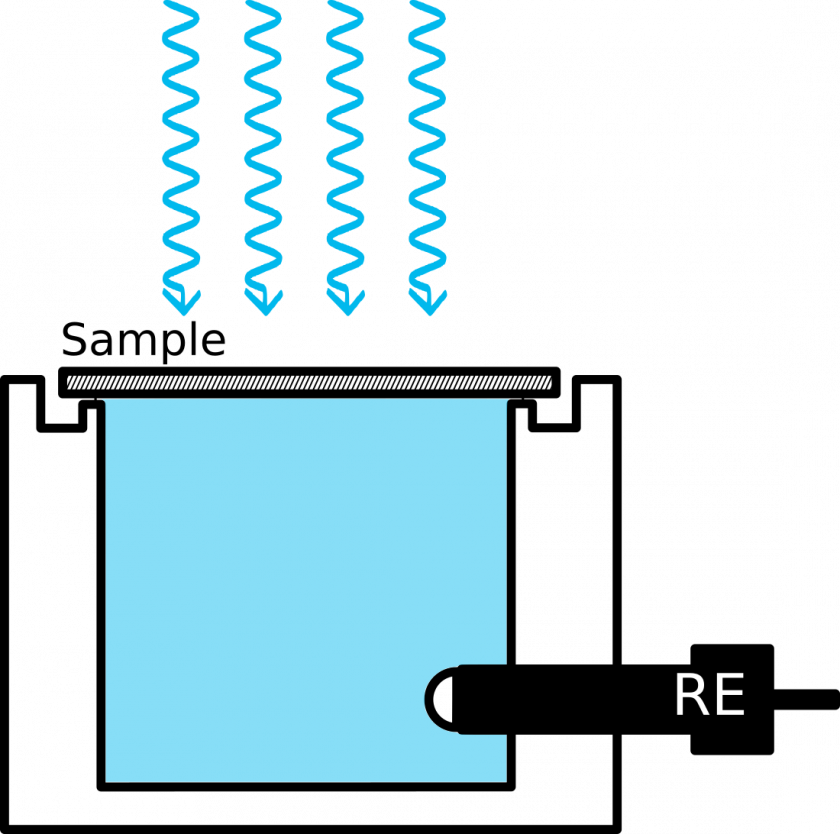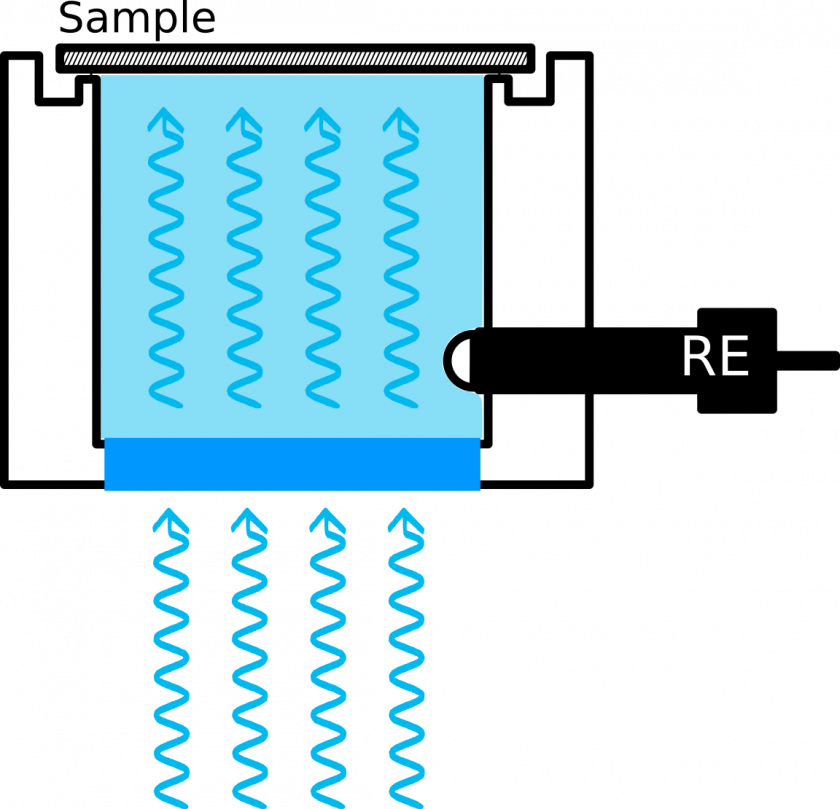Electrochemical measurements are sometimes augmented with Contact Potential (CPD) measurements or Surface Photovoltage (SPV) measurements using a Kelvin probe.
The problem is that in electrochemical measurements a sample is in contact with an electrolyte but for Kelvin probe it needs to be dry.
Following S. Bastide at al. Rev. Sci. Instrum. 70, 4032–4036 (1999) there have been attempts to use electrolyte with samples under a Kelvin probe. However, they were limited to the SPV measurements only as CPD could not be reliably determined due to the peculiar arrangements with electrolyte screening the sample and with dielectric window on top.
With a new design of a sample holder, our Kelvin probes can measure not only SPV but also CPD’s of samples in contact with electrolyte. As a side benefit, one can explore an electrochemical cell potential (electromotive force) created between the sample and a reference electrode .

This version of the instrument is called Electrochemical Kelvin probe but any Kelvin probe by Instytut Fotonowy can be easily converted by adding the sample holder.
Surface Photo-Voltage
Besides CPD the instrument can measure SPV in two geometries:
Top illuminated

where the free sample surface is exposed to light
and
Bottom illuminated

with the light passing the electrolyte first and reaching the sample-electrolyte interface.
Both of the geometries require an additional light source.
Light sources
The Electrochemical Kelvin probe can be integrated with the following light sources:
LED revolver with 10 automatically switched LEDs that provides up to 10 wavelenghts with great light intensity control for surface potential , ""depletion region capacitance**, effective diffusion length measurements,
Photoelectric spectrometer that brings any monochromatic wavelength from 200 - 1100 nm range or a normalized solar radiation AM1.5G to the sample and lets you perform many typical electrochemical measurements as well.